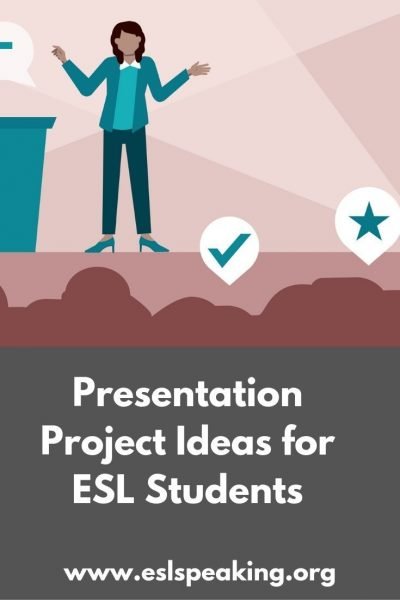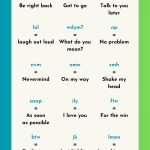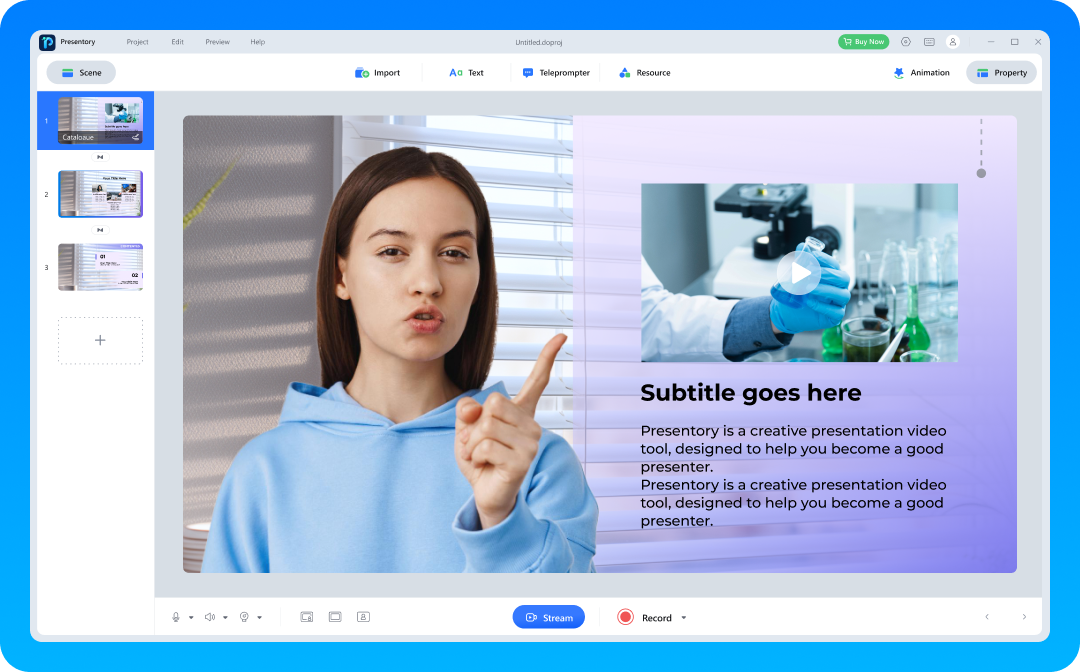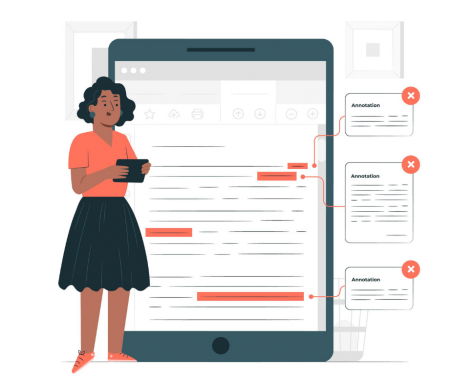Creative Resources for ESL/EFL Teachers


ESL Presentation Topics: 12 Mini Presentations
ESL presentation topics for intermediate and upper intermediate students. Great as a warm-up or a speaking lesson.
You can use the slideshow and share your screen on Zoom or other app when teaching online. Just click on the full screen option in the top right corner of the slideshow.
I used it with my students during our online lesson and we didn’t even have time to discuss all the topics, because they couldn’t stop talking. I was quite impressed how much they knew and also how well they could express their opinions.
One of the reasons why I love conversation activities is that I learn so much about my students. I think that we often underestimate our students and see them as the stereotypical lazy teenagers. Activities like these can show us that they are much more than that.
You can also download the PDF for easy printing below.
Other picture-based resources:
ESL Exam Speaking Picture Description and Questions
No-Prep ESL Picture Description Speaking Activity
Picture Based Speaking Activity For ESL/EFL Classes
Picture Prompts for Speaking and Writing: An ESL Activity
ESL Picture Description: Exam Skills Practice
Food and Travel ESL Lesson: Interactive Online Lesson
Conversation resources:
Popular Conversation Topics for (not only) Adults and Teenagers: 50 Questions
Conversation Starters: 30 Interesting Conversation Questions Not Only For ESL Students
Conversation Questions Gerunds and Infinitives: ESL Speaking Activity
30 Hypothetical Conversation Questions for ESL Students
ESL Conversation Topics

Related Posts

Best English Games to Play in Your ESL Classroom
Here is an extensive list of my favorite English games to play with my students. Board games Yes, you read that right. Cards Against Humanity. But! This is a family edition, so it’s clean. You can download if for free and print, but, make sure you feel comfortable using it,…

Conversation Questions: Comparative and Superlative Adjectives
Conversation questions for practicing comparative and superlative adjectives. 1. We use comparatives to compare two things (or people). This movie is more interesting than the one you chose. Susie is smarter than her brother. 2. Superlatives are used, however, to show the difference between more than two things or more…

At The Restaurant: ESL Pair Work and Role Play Lesson.
Not everyone can cook, but we all love food. It is a perfect conversation topic and even the shy students usually come out of their shells (seafood pun) when you ask them about their favourite food. Food is everywhere now, popular TV shows made home cooking fashionable, food blogs with…
Comments (7)
- Pingback: 50 ESL Conversation Questions for Teenagers and Adults | EFL Ideas
- Pingback: ESL icebreakers, warm ups, back to school activities and more | EFL Ideas
- Pingback: Phrasal Verbs Activity Exercises Discussion Questions | EFL Ideas
- Pingback: Conversation Topics for (not only) Adults: 5o Questions - EFL Ideas
- Pingback: Conversation Starters: 30 Interesting Conversation Questions - EFL Ideas
- Pingback: Back to School Activities ESL for ESL Classes- EFL Ideas
Amazing! Thanks a lot
Leave a Reply Cancel reply
Your email address will not be published. Required fields are marked *
Save my name, email, and website in this browser for the next time I comment.
This site uses Akismet to reduce spam. Learn how your comment data is processed .
- Presentations and me
English Conversation Questions on Presentations and me
- How do you typically feel when you have to give a presentation?
- What are some strategies you use to overcome nervousness before a presentation?
- What do you consider to be your strengths as a presenter?
- Are there any specific areas you would like to improve in your presentation skills?
- How do you prepare yourself mentally and emotionally before delivering a presentation?
- What is the most challenging presentation you have given so far, and how did you handle it?
- Do you prefer delivering presentations to a small group or a large audience? Why?
- What role does body language play in making a successful presentation?
- How do you engage with your audience during a presentation?
- What are some effective techniques for managing time during a presentation?
- Can you share a memorable presentation experience where everything went exceptionally well?
More English Conversation Topics on Presentations
- Effective slide design
- Engaging the audience
- Body language tips
- Storytelling techniques
- Dealing with nerves
- Handling questions
- Using visual aids
- Speech structure
- Virtual presentations
ESL Speaking
Games + Activities to Try Out Today!
in Activities for Adults
Presentation Projects for Students | ESL Presentation Ideas
If you do presentation with your language classes , then you’ll need to check out some of these presentation project ideas. Get beyond the boring old PowerPoint presentation and use some of these creative ideas to bring a bit of excitement and life back into your classes.

Presentation Projects and Ideas for ESL students
Your students will love it, and it’ll also keep things fresh for you if you’ve seen the same old projects year after year.
Presentation Projects for ESL/EFL Students
Over the years teaching in a Korean university , I’ve had students do plenty of presentation projects, with varying degrees of success . I hope that you can learn from my mistakes and make your ESL speaking classes as awesome as possible.
Presentation projects, if set up well are an excellent way to add a bit of variety to the ESL classroom. After all, students get tired of hearing the teacher talk all the time! And you probably get tired of talking. I know that I always did! Plus, it’s fun to hear what students have to say.
Here are my top presentation projects for ESL/EFL students.
- Basic speech (not recommended!)
- Presentation, then discussion time
- Poster presentation
- Making a movie
- PowerPoint presentation
- Impromptu presentation
- Teaching the class how to do something
If you teach business English, then the sky is kind of the limit in terms of what topics you choose. You could focus on just about anything that students may expect to present on when they start working in a company.
#1: A Basic Speech
Each student has to choose from a variety of topics such as family , food, dreams or hobby. They have to speak for between 1.5 and 2 minutes. I did this only once, with low-level students and it was ridiculously boring such that I never did it again.
The main problem is all the presentations are basically the same and go a little something like this: “I have a mom. She is 49 years old. She has brown hair and black eyes. I have a dad. He is 57 years old. My dad has brown hair and black eyes. He is short.” Word for word, almost the same!
Trust me, they were some of the most tedious and excruciating hours of my entire life. It was from this point on that I vowed to never set up a presentation like this again. I got a lot more creative and made students talk about things that were more varied and interesting.
Of course, the bad results from this experiment were totally my fault. I should have chosen more interesting topics for the students, or given them better guidelines. Seriously, better ESL presentations topics would have made a big difference here and I really have nobody to blame but myself!
Maybe Not Terrible if…
This style of presentation could have been far less bad if I had done a better job setting it up. I should have set the topic to something like, “Current events.” That way, students would have been forced to choose something in the news and the presentation topics would have been quite varied.
Or, I could have required some visual aids to make it a bit more interesting for the students.

#2: Presentation, and then Discussion Time
Each group has to give a presentation about a topic of their choosing and think of at least 5 interesting questions/surveys/activities that groups could discuss or do for about 20 minutes after their presentation. This often works best if the presentation is based on 2-3 articles that the students have to send you in advance.
This presentation project ideas had varying results, since some groups chose a topic that led to a lot of “yes/no” answers and discussions that lasted about 5 minutes, at most.
However, this could have been avoided by personally approving the topics in advance and requiring groups to submit their assignment for feedback a week or two before the actual presentation. I blame nobody but myself for the failure on this one!
This ideas for presentation projects isn’t a bad one, if you set it up well. It can work well for English majors or advanced level students who want a class filled with conversation and discussion.
#3: Poster Presentation
A poster is one of my favourite presentation projects. Each group has to choose a current controversial issue (like environmental pollution, suicide, North Korea) and make a poster that had English writing and some interesting pictures on it. Set a (low) max number of words or your posters will be terrible and filled with wordy death!
Then, the students have to do a presentation based on the poster where each group member speaks for 1-2 minutes, without a paper.
For this one, it’s very important that you require no paper script, or you’ll just have students reading off their notes. Also, don’t allow students to put too many words on the poster, or you’ll have students reading off of this.
If I ever did this again, I would do something where the audience was more involved, such as peer grading. Or, I would require each group watching the presentation to think of at least 1 question to ask and they’d get a point for doing so. Basically, it’d give the rest of the students in the class a reason to listen.
It’s potentially an excellent group presentation project!

ESL presentation ideas
#4 Presentation Projects: Making a Movie
Another ESL presentation idea is to have students make a movie. It’s easier than ever these days because almost everybody has a smartphone, and it’s free to upload the video to YouTube. This works particularly well if you teach film, art or fashion students and you’ll get some amazing results. It’s actually one of my favourite ESL projects these days.
You can have a fun “viewing day” in class and encourage everyone to bring a snack! It’s a nice change from the regular old textbook thing.
Here’s how I’ve done movie projects.
- I put students into groups of 4-5. One person can “film” the project and then you can have 2-3 actors. Finally, one person might be designated the write the script or edit. However, I leave it up to the group how they want to divide the roles and not everyone has to appear on camera.
- I set a minimum and maximum time for the movie (usually 3-5 minutes), as well as a certain number of English sentences that must be spoken during that time. It must be a story of some kind that makes sense.
- I’ll usually give a topic or theme of some kind, but may leave it open.
I evaluate it based on the following things:
- Quality of English
- Interesting story
- Quality of production (I don’t expect a lot, but just basic stuff like making sure it’s bright enough, we can hear the people talking, etc.)
The quality of English usually gets around 10 marks, while the other two categorie s are each worth five.
#5: PowerPoint Presentation
This has the potential to be very interesting, or PPT death. It all depends on how you set the presentation project up.
If you do go with this method, you should set a maximum number of slides and also a maximum numbers of words per slide (5-10?). Emphasize to students that you want to see pictures, charts, etc. and not a wall of text.
I generally allow each group to have 1 intro and 1 conclusion slide, and then 1 slide per group member. So if there are 6 students in the group, it’ll be 8 slides. I usually say that each student has to talk about their slide for 30 seconds to 2 minutes, depending on the level.
Teach students how to make good PowerPoints and then penalize heavily for not following your recommendations. You should also coach students on how to stand to the side and keep their body pointed towards the audience. Eye contact is key!
This is an excellent idea for presentation projects, if some key expectations are set out in advance. Eye contact/don’t look at screen, pictures instead of words on the PowerPoint, etc.
#6: Just a Minute Impromptu Presentation
If you want to give your students some practice with making impromptu, or off the cuff style of speeches, then Just a Minute may be exactly what you need. It’s a toastmasters style activity and makes the perfect warm-up activity for intermediate or advanced level students.
You can also turn this into a listening activity, instead of just an ESL presentation by requiring the other students in the group to ask follow-up questions. Try this one with your classes and I think your students will really enjoy the challenge.
Find out more about it here:
Just a Minute ESL Speaking Activity
Impromptu presentation skills are never a bad thing for students (or anyone) to practice!
#7: Teaching Others How to Do Something
One of the best presentation ideas for students is to get them to teach the class how to do something. I’ve done this a few times now and they are some of my most memorable classes.
The way it works is that students choose something they know how to do well. Students in the past having chosen things like:
- How to fry an egg
- Heading a soccer ball
- Playing the guitar
- Getting dates
- Making sure their parents give them enough spending money
- Eating out cheaply around the university
- Getting the best class schedule
I allow students to bring in props, material or make a simple powerpoint presentation with pictures (no text) to explain.
#8: What are you Cooking?
If you want to have your students do some fun presentations in a more informal kind of way, then consider trying out “What are you Cooking?” Students have to plan a 3-course meal based on ingredients from their classmates and then make a presentation to the class who votes on the best menu.
Sounds interesting? I think you’ll love it so give it a try today. More information here: What are you Cooking?
#9: An Informative Speech
ESL Presentations FAQs
There are a number of common questions that people have about making presentation in English. Here are the answers to some of the most popular ones.
Why are Presentations Important for Students?
Having students give presentations is important for delivering a positive learning environment. They can also help teach communication skills and assist with students feeling comfortable talking in front of a group of people. Finally, they are an engaging way to share ideas and help students build confidence.
What Makes a Great Presentation?
A great presentation is very memorable. This can be done in various ways, but graphics, images, relevant facts, story telling and humour play an important role. Finally, a memorable presentation motivates the audience to action.
What are the Advantages of a Presentation?
Businesses and people in general use presentations for various reasons. The advantage of them is that they can educate, motivate, and persuade in a more interesting way than the written word alone can.
Should Students Memorize Speeches?
Should you make students memorize their presentation, or not? It’s an interesting question and I certainly see points for both sides. However, I generally lead towards the memorization thing because…
- It results in presentations that are far more interesting for the audience
- I only require 30 seconds-2 minutes of speaking. It’s not a big task to memorize this amount
- It helps students remember vocabulary and key phrases
That said, I do know that students get nervous and that this can be a big ask. It’s for this reason that I tell students to bring their notes up to the front with this, but to leave them in their pocket.
If they have an emergency (forget what to say!), they can take it out and use it. But, only once if they don’t want to get a penalty. After that, put it aside and continue on.
I’m usually kind and if a student has to do this twice, I don’t mind. My main point is that I don’t want students reading exclusively off of a paper.
What are some Things to Consider for Presentations in English?
If you’re going to have your students do an ESL presentation, there are a number of factors that you’ll want to consider.
- How to explain the task in a simple way that students can understand what they need to do. How will you evaluate it?
- When will students prepare (outside, or inside of class. A combination of both often works well).
- What kind of equipment can students use (Projector, or not).
- How students will deliver the presentation. Will you expect things like gestures and eye contact?
- What kind of language will the students use? Will you teach them about the introduction (I would like to start by…) and conclusion (In conclusion, you can see that…), as well as transition sentences (Moving on to…). The style of the speech (persuasive, informative, etc.) is important for this.
- What will the rest of the class be doing while the presentations are happening? Is there a listening task you can assign to make this activity even more valuable?
The biggest tip I can give you is to be clear about the terms of the assignment. And, also how you will evaluate it. If expectations are clear, results will be far better and your life will be easier as well because you won’t have to answer the same questions over and over again.
What are the Top 20 ESL Presentation Topics?
Here are some of the most common topics that you may consider assigning to your students:
- Family (can be sensitive for some though)
- Current events
- If I had a million dollars…
- Vacation (past or future dream)
- Ideal first date
- TV and movies
- Favourite book
- Time, and how do you spend it
- An ideal first date
- Jobs and work
- Some future goals
- A favourite restaurant
- Money (saver or spender)
- Future plans
- Controversial topics
- Teaching someone how to do something
- If you were the president…
These interesting topics means that you presentation projects will be better than ever! No more boring, okay? Okay.
Do you Like these Ideas for Presentation Projects?

- Amazon Kindle Edition
- Bolen, Jackie (Author)
- English (Publication Language)
- 148 Pages - 03/09/2016 (Publication Date)
Then you’re going to love this book, 101 ESL Activities: For Teenagers and Adults . It’s an extremely practical, well-organized teaching guide that will help you plan your lessons in no time. The best part about it is that your students will be having fun, while learning English.
The book is available in both digital and print formats. The (cheaper!) digital one can be read on any device-Kindle, Mac, Pc, Smartphone, or tablet by downloading the free Kindle reading app from Amazon. It’s super-easy to have some top-quality ESL activities and games at your fingertips at all times.
Keep a copy on the bookshelf in your office and use it as a handy reference guide. Or, bring a copy with your on your phone or tablet to your favourite coffee shop for lesson planning on the go. It really is that easy to make your English classes even better.
Check out the book on Amazon by clicking the link below:
Have your Say about ESL Presentation Ideas
What’s your top ESL presentation project ideas? Leave a comment below and let us know what you think. We’d love to hear from you.
Also be sure to give this a share on Facebook, Twitter, or Pinterest. It’ll help other teachers, like yourself find this useful teaching resource.
Last update on 2024-04-25 / Affiliate links / Images from Amazon Product Advertising API
About Jackie
Jackie Bolen has been teaching English for more than 15 years to students in South Korea and Canada. She's taught all ages, levels and kinds of TEFL classes. She holds an MA degree, along with the Celta and Delta English teaching certifications.
Jackie is the author of more than 100 books for English teachers and English learners, including 101 ESL Activities for Teenagers and Adults and 1001 English Expressions and Phrases . She loves to share her ESL games, activities, teaching tips, and more with other teachers throughout the world.
You can find her on social media at: YouTube Facebook TikTok Pinterest Instagram
Great ideas! Thank you so much for such inspiring ideas for presentations.
I’ve been looking for some presentation ideas for my students here in South Korea and ran across your list. Thank you! Lots of good ones but I think I’m going to give the current events one a try. I’ll let you know how it goes.
Great info! Thanks for sharing your ideas for presentations. I love to do them but it was getting a bit stale for me so appreciate the new ideas.
Leave a Reply Cancel reply
Your email address will not be published. Required fields are marked *
Our Top-Seller

As an Amazon Associate, I earn from qualifying purchases.
More ESL Activities

100 Common English Questions and How to Answer Them

Five Letter Words Without Vowels | No Vowel Words

List of Text Slang, Definitions, and Examples | Chat Abbreviations

200+ List of Categories | Different Types of Categories
About, contact, privacy policy.
Jackie Bolen has been talking ESL speaking since 2014 and the goal is to bring you the best recommendations for English conversation games, activities, lesson plans and more. It’s your go-to source for everything TEFL!
About and Contact for ESL Speaking .
Privacy Policy and Terms of Use .
Email: [email protected]
Address: 2436 Kelly Ave, Port Coquitlam, Canada

Presentory for Windows
Presentory for mac, presentory online.
Rebrand your approach to conveying ideas.
Differentiate your classroom and engage everyone with the power of AI.
Knowledge Sharing
Create inspiring, fun, and meaningful hybrid learning experiences
Create with AI
- AI Tools Tips
Presentation Ideas
- Presentation Topics
- Presentation Elements
- Presentation Software
- PowerPoint Tips
Presentation Templates
- Template Sites
- Template Themes
- Design Ideas
Use Presentory Better
- Creator Hub
More Details
- Basic Knowledge
- Creative Skills
- Inspirational Ideas
Find More Answers
- LOG IN SIGN UP FOR FREE
- Full Guide About Best ESL Presentation Topics for Students
- 10 Unique PowerPoint Design Ideas to Captivate Your Audience
- Mastering Business Presentation Skills for Success (Innovative Business Presentation Ideas Updated)
- Creative 8 New Year Presentation Ideas with PowerPoint Themes
- Crafting an Effective PowerPoint Front Page Design for Maximum Impact
- Mastering PESTEL Analysis with PowerPoint: Guide and Templates
- Highlighting The Important Components of Real Estate PowerPoint and How to Make One
- Designing A Sales Plan Presentation for PowerPoint - An Overview of All Details
- Best Presentation Themes to Engage Your Audience in 2023
- Best Presentation Topics for Engineering Students
- 5 Engaging Presentation Topics for University Students
- 10 Interesting Presentation Topics for Students That Will Help You Shine
- Intriguing Topics for Engaging Computer Science Presentations
- Best 10 Selected Current Topics for Presentation to All Audience
- Hot Paper Presentation Topics For CSE
- Elevate Your Skills: Best Topics for Presentation in English
- Top MBA Presentation Ideas To Elevate Your MBA Education
- A Complete Guide to Create Company Profile PowerPoint Presentation With Templates
When you choose ESL presentation topics your students are passionate about, you set them up for success. They'll be more engaged in learning and more likely to retain the information you're teaching. So, how do you choose the proper ESL presentation topics for your students?
Choose topics you know will spark their curiosity and inspire their interest in learning. At the end of this article, you'll learn an easy-to-use presentation maker to help with your virtual lessons. Keep reading if you want to learn more about ESL topics and ideas.
In this article
- What Types of ESL Presentation Topics Are You in Search Of?
- How To Prepare Your ESL Presentation?
- 5 Best ESL Presentation Topics for All Students
- Best Tool for Your ESL Presentation – Wondershare Presentory

Part 1. What Types of ESL Presentation Topics Are You in Search Of?
What's the secret to giving an ESL presentation that will keep your audience hooked? Flexibility. Also, tailor your topics to the student's proficiency level, interests, and learning objectives. Spark your students' curiosity with these engaging ESL presentation topics .
This category covers everyday activities, routines, and personal experiences. Daily life topics are often a good choice for beginners, as they tend to be familiar and easy to relate to.
Travel and Culture
Explore different countries, customs, and traditions. Students can present their dream destinations, cultural celebrations, or travel experiences. ESL presentation topics like this promote geography, tourism, and cross-cultural understanding.
Discuss the ever-evolving world of technology, from smartphones to social media trends. Students can discuss gadgets, apps, or the impact of technology on society, fostering language skills in a modern context.
Environmental Issues
Raise awareness about environmental concerns like climate change, pollution, and conservation. Students can propose solutions or discuss the importance of sustainable practices.
Current Events
Encourage students to share their views on global happenings. Ask open-ended questions to provoke students' critical thinking about the news. Avoid asking your students subjects that have a simple yes or no answer.

Literature and Arts
Explore the world of literature, art, and entertainment. Students can discuss their favorite books, movies, or artistic movements.
History and Politics
Delve into historical events, political systems, and influential figures. These ESL presentation topics encourage critical thinking and cultural awareness.
Food and Cuisine
Food is a universal language. It brings people from all walks of life to share experiences and create memories. And what better way to learn about others' culture than through their cuisines? Students can share their passion for food and cooking and express their unique cultural identity.
Part 2. How To Prepare Your ESL Presentation?
If you have chosen presentation topics for ESL students , it is time to start preparing. Here's a simple, three-step guide to help you deliver effective ESL presentations:

Use Data and Infographics for Less Content
Short attention-spanned students and visual learners often struggle with processing lengthy textual information. Using data and infographics becomes even more crucial in such cases. You can include charts, graphs, diagrams, and other visual elements that help to illustrate key points. Then, choose relevant statistics or facts that support your topic. Visual aids can capture attention and maintain their engagement throughout the presentation.
Make an Outline for Your ESL Presentation
Creating a clear outline is essential for maintaining the flow. Start with an engaging opening to attract your students' attention. Then, organize your content logically into sections or points. Use bullet points or numbered lists to keep information organized and easy to follow.
Practice Before Presentation
Rehearse your presentation multiple times, focusing on your pacing, pronunciation, and overall delivery. If possible, present in front of a friend or colleague for feedback. It will boost your confidence and help you address any areas that need improvement. Remember, the more you practice, the more comfortable you'll be when delivering ESL presentation topics to your students.
Part 3. 5 Best ESL Presentation Topics for All Students
Finding ESL presentation topics that work for all levels can be a challenge, but it's also a rewarding one. Here is a summary of ideas that work well for all proficiency levels, with specific ideas for each category:
These ESL presentation topics offer a range of complexity. It allows your students to engage in meaningful discussions while building language proficiency. Below is a brief explanation for each topic:
ESL presentation topics are a great way to learn English, build confidence, and learn about different cultures. They can be fun and rewarding for students of all levels. Beginners can start by sharing their daily routines and interests. It is a good way to practice using basic vocabulary and grammar in a fun way. Advanced students can delve deeper into cultural comparisons and environmental awareness.
Travel is another topic for ESL presentations for students of all levels. Beginners can explore their travel dreams, which is a fun way to improve their vocabulary and descriptive skills. Presentation topics for advanced ESL students can focus on the cultural and economic aspects of travel destinations. It can help them develop their descriptive and storytelling abilities.

Talking about your favorite apps is a great way to improve your English skills. For beginners, it's a fun way to practice using vocabulary related to technology and apps. And for advanced students, it can be a springboard for discussing more complex topics like tech ethics and innovation. Plus, giving a presentation about apps is a great way to collaborate with your students and have a tech-related debate.
Talking about plastic pollution is a good way for ESL students of all levels to learn English and the environment. Beginners can start by discussing their own experiences with plastic pollution. What do they know about the causes and effects of plastic pollution?
It is a good way for beginners to practice using simple language in a meaningful context. Presentation topics for advanced ESL students can be more on analysis and solutions for global issues.
Recommending a book is one of the best presentation topics for ESL students . For beginners, recommending a book can be a simple way to practice using basic vocabulary and grammar structures. Advanced students can hone their analytical skills by dissecting literary and artistic masterpieces. It promotes thoughtful interpretation and expression.
Imagine students' eyes glazing over as you drone on about a topic they're not interested in or that's too difficult for their level. But now imagine their faces lighting up as you talk about something they're passionate about and that they can easily understand. That's the power of choosing the right topic.
Once you've chosen the right ESL presentation topics , you need the right tools to create an engaging and informative presentation. That's where Presentory comes in. If you're interested in how it can help you create ESL presentations that will capture your students' attention and help them learn, keep reading.
Part 4. Best Tool for Your ESL Presentation – Wondershare Presentory
Effective classroom communication and engagement are vital. Presentory, an innovative and user-friendly video presentation maker, empowers ESL instructors and education influencers. Want to create and present engaging virtual lessons? That's easy. With Presentory, you can smartly capture your students' attention.

Free Download Free Download Try It Online
Key Features
Here are some of the features that make Presentory the best tool for your ESL presentation:
- Import Source Material
Import more materials for your presentations. Add images, videos, and even existing PowerPoint presentations. No need to switch between apps – everything you need is at your fingertips.
- Various Types of Font Resources
Choose from a wide selection of fonts to add a touch of creativity and professionalism to your presentations. Select the perfect font that matches your style and content effortlessly.
- Beautification Effects
It automatically recognizes portraits and adjusts your image for a polished look. Say goodbye to distracting background clutter and hello to a clean, professional appearance.
- AI Keying for Seamless Video Appearance
Removes the background image in the camera, leaving only the presenter's image. It also supports color picking, allowing you to fine-tune your video appearance effortlessly.
- Support for Popular Conferences and Live Broadcasts
Stream your ESL presentation topics with popular conferencing platforms like Zoom, Microsoft Teams, and Google Meet. Deliver your content to a global audience with ease.
- DIY Teleprompter
Adjust the window size, font color, size, and transparency to suit your preferences. Ensure a smooth and confident delivery every time.
- Noise Reduction
Eliminate distractions and ensure crystal-clear audio with Presentory's noise reduction feature. Your audience will appreciate the clarity of your message.
- Filter Effects
Add a touch of creativity to your ESL presentations with filter effects. Enhance the visual appeal of your content and keep your audience engaged.
The Bottom Line
No matter what ESL presentation topics you choose, make sure that they are something you are passionate about and can present in an engaging and informative way. With planning, you can create ESL presentations that are both educational and enjoyable for your students.
You can also add Presentory into your teaching toolkit and watch your presentations come to life with impact and engagement. With its intuitive interface and powerful features, Presentory is a good choice for ESL teachers and education influencers looking to show their expertise effectively. Try it today and watch as your students become more engaged and inspired.
You May Also Like
- 10+ Clear Business Model Canvas Templates
- Over 100 Inspiring Google Slides Themes and Ideas for Every Occasion
- How to Control Your PowerPoint by Using an Apple Watch?
Related articles
Would you like to help?
ESL Discussions
14,180 english conversation questions.
* 709 discussions. * Ready-to-print handouts. * Everyday & controversial topics.
Help My Site
Copyright © 2008-2023 by Sean Banville | Links | Privacy Policy

Humans: please leave this field blank.
If you do not manually logout, your login will last 30 days on this device.
Not part of the community yet? JOIN NOW
Speaking Activities
Conversation
Speech & Debate
English Speaking Countries
The News in English
Personality Traits Board Game
Let's Talk About Me
Lonely Student
Giving Support
Business Idioms 13: Public Speaking
Friends: The One With The Male Nanny
ESL Oral Presentation Activities ( See Activities )

Giving a speech is difficult in any language. Teach your students that it is natural to be nervous, but there are presentation skills they can develop to become better at public speaking.
Use these ESL speech activities to help students improve their posture, eye contact, gestures, and voice.
Jump to ESL Oral Presentation Activities
Types of Speeches
There are three basic types of speeches: Informative, Demonstrative, and Persuasive ( See Speech Topics at bottom ).
An informative speech tells the audience about something. It does not try to persuade. It’s only purpose is to give the facts. You can give an informative speech on just about anything.
A demonstrative speech tells or shows the audience how to do something. It gives clear steps from start to finish. Examples include how to cook a dish, how to build a house, or how to play a sport.
A persuasive speech tells the audience why they should do something. It gives clear reasons why the audience should change their mind and agree with the speaker.
Types of Delivery
There are four basic types of delivery: Impromptu, Outline, Manuscript, and Memorized.
Impromptu speeches are generally short and require little to no preparation. Usually there aren’t any written notes. The speaker must think on the spot. It’s common to be asked to give an impromptu speech at a special occasion like a wedding or to accept an award.
Using an outline is the most common type of speech delivery. The speaker prepares an outline which highlights key words and facts. Because there is something written, it is harder to maintain eye contact than an impromptu speech.
A speech with a manuscript has every word written down, so the speaker does not forget to say anything. It takes a lot of practice to sound natural with a manuscript because written English is slightly different from spoken English.
A memorized speech is the most difficult and takes a lot of preparation. The speaker must write a manuscript and then memorize every word. This is the popular route of the Speech Contests that I’ve experienced in Japan. The speaker can practice gestures and intonation, but memorized speeches usually sound lifeless and unnatural.
Speaking of Speech and Getting Ready for Speech are good resources for more ESL oral presentation activities.

Try Our ESL Oral Presentation Activities

Posture Practice
Eye contact.

Eye Contact Activity

Everyday Hand Gestures

Using Gestures In Presentations

Tongue Twisters To Practice Voice

Voice Inflection Activity

Debate Format: Final Debate

Debate: First Negative Constructive

Debate: Organizing The Opinion


Debate: Rebuttal Speech

Debate: Refuting An Argument

Giving Opinions

Giving Reasons

Activities by Topic

Being A Good Audience

Demonstration Speech Assignment

Informative Impromptu Speech

Persuasive Argument Activity

Persuasive Speech Assignment

Presentation Skills Final Exam

Speech Conclusion

Speech Introduction

Visual Aid Speech

Brainstorming ESL Writing Topics
GET UNLIMITED DOWNLOADS NOW!

Hi fellow EFL Sensei!
I'm Becki, the Co-Founder and the one who put up all these great speaking activities. We’re here to provide enjoyable lessons for teachers like you! Learn more
Popular Lessons

SIGN UP
FOR OUR MONTHLY NEWSLETTER
10 Best Icebreakers Packet,

Featured Lesson

Like us on Facebook
Featured Teacher

Matt Purland
Free e-books, podcasts, video lessons, and online games.
Submit a lesson
Write a blog
Featured teachers
Small Talk Topics
Chinese Whispers Sentences
Detectives: Past Modals
Disclosure Privacy Policy Terms of Use Copyright © 2011 - 2024 | All content appearing on this website is proprietary, copyrighted, and owned by EFLSensei.com. EFLSensei.com is owned and managed by Sunny Mangos, Inc. Website Services by Weldon Websites

Free PowerPoint Lessons To Teach English
Download FREE ESL PowerPoint lessons and use them in class today. These PowerPoint lessons are great to use in lessons teaching English to English language learners. You’ll find vocabulary PowerPoints, grammar PowerPoints, seasonal grammar points, phonics PowerPoints, and more presentations covering the topics that ESL students typically study.
ESL PowerPoint Lessons
Browse through all our ESL PowerPoint lessons below.
- Action Verbs
- Big And Small
- Comparative
- CVCE Words With A
- CVCE Words With E
- CVCE Words With I
- CVCE Words With O
- CVCE Words With U
- Daily Routine
- Describing Appearance
- Fall/Autumn
- Family Members
- Farm Animals
- Feelings And Emotions
- First Conditional
- Five Senses
- How Much Is It?
- Jobs And Occupations
- Natural Disasters
- Onomatopoeia
- Opposite Words
- Ordinal Numbers
- Past Tense Irregular Verbs
- Pet Animals
- Phonics A to Z
- Places Around Town
- Prepositions Of Place
- Prepositions Of Time
- Present Progressive
- Present Simple
- Quantifiers A Few and A Little
- Quantifiers Much and Many
- Random Name Generator
- Rooms Of The House
- School Subjects
- Sea Animals
- Second Conditional
- Sickness and Health
- Spring Vocabulary
- Superlative Adjectives
- Telling The Time
- There Is There Are
- Tongue Twisters
- Transportation
- Wh Questions
- Winter Clothes
- Winter Sports
- Would You Rather
- Zero Conditional
More Resources
You can find many more free ESL resources on Games4esl. Check out our free PowerPoint Games , Activity Videos , Online Quizzes , Worksheets , and ESL Printables .

Public speaking – 8 ESL English Discussion Questions

Here are 8 Conversation Questions about the topic of “ Public speaking ”:
1- What do you love about public speaking ?
2- Can introverted people be good public speakers ?
3- What do you hate about public speaking ?
4- What is the impression you want your audience to take away from your speech?
5- What do you fear most about giving a presentation?
6- Who are the speakers that inspire you , that give you goosebumps?
7- In your opinion, what are the ingredients and tactics you should have and adopt to be a good communicator and public speaker?
8- Why do you feel impelled to speak?
LESSON PLAN FOR ENGLISH TEACHERS
Understanding presentations.

Level: Pre-intermediate (A2-B1)
Type of English: Business English
Tags: business people marketing management challenges business skills giving a presentation 16-18 years old 18+ years old Situation based Article based
Publication date: 10/26/2022
This lesson looks at the language of talking about graphs and charts in presentations. Students will read a presentation speech and listen to a presentation while completing a graph. Exercises focus on reading and listening skills, related vocabulary and offer the opportunity for students to discuss questions on the topic.
by Joe Wilson
Understanding_presentations_1_be.mp3
ANA CAROLINA
Really good, I loved the fact it has a lot of takilng points.
Leave a Comment
Student worksheet
Teacher lesson plan
Download audio
Save lesson to
Understanding_presentations_1_ae.mp3
COURSE PLANS
This comprehensive course plan covers the full range of language needs – listening, role play, vocabulary development.
Worksheets in English for Business course plan
Type of English: Business English Level: Pre-intermediate (A2-B1)
Make your lessons unforgettable
Did you know that your students can review the target language from our worksheets with our Expemo flashcard app? To let your student know, just enter their email address below (multiple emails can be separated with a comma).
Moving through your presentation
- Business Skills
- Presentation Skills
Presentations - useful phrases

This is a standalone lesson but it can also be used as part of the set titled:
- Delivering presentations
LESSON OVERVIEW
With this lesson plan, students learn plenty of useful phrases for presentations in English . They also prepare presentation excerpts , and learn how to start a presentation.
The lesson is the second of the three-part series of lessons about delivering presentations. You will find the first part of the series here and the third part of the series here .
USEFUL PHRASES FOR PRESENTATIONS
The lesson starts with a brief discussion on successful presentations. After that, students match words useful to talk about presentations (e.g. recap, takeaway, breakdown ) to their meanings. Then, they read six excerpts from a presentation and decide which of the words studied in the previous exercise the excerpts are examples of. Next, students read four statements and decide if they agree with them or not. The statements refer to the presentation flow. After that, students read sentences and complete them with one word to create useful phrases for presentations (e.g. in a nutshell, let me expand on this point, let’s kick off by ). Then, they look at a list of functions and decide which of the phrases from the previous exercise exemplify them . This part of the lesson ends with a rephrasing exercise in which students rewrite sentences to use the newly learnt vocabulary.
HOW TO START A PRESENTATION
In this part of the lesson, students prepare parts of presentations using relevant phrases from the first part of the lesson. They do that using prompts which describe what their part needs to cover. You can find the prompts on the last pages of the worksheet. Then, they move on to discuss the ways to start a presentation (e.g. by presenting an amazing fact, by telling a story). After that, students read some phrases for presentations and decide which of the discussed techniques they can be used with. Finally, students do a group task . They need to brainstorm how to effectively start different kinds of presentations (e.g. a sales pitch for a time-management app, a motivational talk about developing new habits).
Subscribe to unlock these and many other Standalone lesson lesson plans with the Unlimited plan
Leave a Reply Cancel reply
You must be logged in to post a comment.
A little bit too US English and also relatively casual language. Maybe more suited to TED style or conference presentations rather than business.
Nice lesson but the online version doesn’t match with the SV and TV
Thanks for your comment! Can you share what exactly is off? I must be missing something because eveything looks OK to me.
Could you please send the link to the original presentation on how blockchain can empower women? The script looks really good and I’d love to watch the video if there is any. Thank you!
I’m afraid it wasn’t one particular presentation that we used but rather a collection of different facts and ideas. But you can read more about blockchain empowering women here .
a real masterpiece! thank u!)
Thanks, I’m glad you like it 🙂
Unfortunately none of the links work anymore for the google docs. They all say the file has been deleted. This is for the ‘phrases’ and Ex. 8 on the online presentation slides (44).
Apart from that, it’s a nice lesson with some great, informal expressions and phrases for the students to use.
Thanks for your comment! Regarding the links, everything works fine on our end. If you’re experiencing some trouble, please email us at [email protected] 🙂
Browse other materials recommended for you

Members only! Subscription models
With this lesson, students talk about subscription models, explore vocabulary and discuss their personal experiences and opinions. They also watch a video featuring advice on how to manage subscriptions and discuss real-life services.

Changing careers
With this speaking lesson, students navigate the territory of career changes. They discuss job market trends, as well as benefits and challenges of transitioning careers. They also talk about important skills and watch a video about a woman who changed careers.

The golden age of podcasting
Explore the fascinating field of technology and podcasts with this lesson! After reading an article, students discuss the use of AI in podcasts, practise vocabulary to talk about the topic and discuss their ideas if they launched a 100% AI-generated podcast.

Ace your next job interview
Dive into the realm of job interviews with this lesson. Students practise job interview vocabulary, watch a video for tips, talk about what can make an interview successful and learn about the STAR approach for responding to interview questions.

Office, remote or hybrid?
With this up-to-date lesson, students discuss work life after lockdown and practise vocabulary to talk about workplace changes. They also watch a news video about companies changing the way they work and discuss different work models.

As per my last email…
Dive into the intriguing world of emailing and talk about what annoys people the most. With this lesson, students expand their vocabulary, express irritation, and analyze real-life situations.

Is a degree worth it?
Engage your students in a discussion on the ins and outs of higher education. Explore education and career-related vocabulary and work on comprehension skills by watching a news report on the job market.

How to stand out at work
Let your students share opinions on getting promoted and being noticed at work. They will discuss hypothetical situations, share experiences and comment on advice from a video.

All about branding
This is a perfect lesson for students who want to discuss brands and the idea of branding. Students learn and practise useful phrases, as well as improve their comprehension skills.
Is there a minimum subscription period if I choose a monthly subscription?
No, there’s no minimum required number of subscription months. You can cancel any time you want. Basically, you can sign up and then cancel your subscription the next day, which will mean you have access for 1 month and won’t be charged again.
What currencies can I pay in for my subscription?
Our default currency is USD (American dollar), but you can also pay in EUR (euro), GBP (British pound sterling) or PLN (Polish zloty). You can change the currency you want to pay in at the Pricing page before selecting a subscription plan.
How can I edit an e-lesson plan?
You can get your own editable copy of an e-lesson plan and make changes to it. To do so, either (1) make a copy of it on your Google Drive (preferable method) or (2) download it in a Powerpoint format (but formatting might be a bit off so we can’t guarantee that it will work well).
Username or Email Address
Remember Me

5 Tips to Boost Your Presentation Skills and Wow Your Audience
- The Speaker Lab
- May 24, 2024
Table of Contents
Crafting an unforgettable presentation requires more than just compelling content. The way you deliver your message is just as important. No matter your role—CEO, entrepreneur, author, professor, coach, or consultant—honing your presentation skills is key to effectively communicating your ideas and making a memorable impact on your audience. It may not always be easy, but we’re here to help. To help you nail it every time, we’ve compiled 10 essential tips for honing your presentation skills . From knowing your audience to practicing confident body language, we have the guidance you need to give a presentation that’s effective and memorable.
5 Essential Tips for Delivering a Killer Presentation
You’ve probably sat through your fair share of presentations—some good, some not so good. The difference between an effective presentation and one that falls flat often comes down to a few key factors. If you want to improve your skills and deliver a presentation that engages your audience, here are some essential tips you need to keep in mind.
1. Understand Your Audience
Before you even start putting together your presentation, you need to take some time to understand who you’ll be speaking to. What are their needs, interests, and expectations? What level of knowledge do they have about your topic?
Tailoring your content and delivery style to your specific audience is crucial for making a real connection and delivering value. For instance, if you’re giving a presentation to a group of executives who are pressed for time, you’ll probably want to give them key takeaways upfront. By adapting your approach and leading with the most important points, you would be able to better hold your audience’s attention and make a strong impact.
2. Practice Makes Perfect
If you only go away with one tip today, then know that having the discipline to practice is an essential presentation skill. Rehearsing your talk multiple times helps you build confidence, refine your delivery, and ensure a smooth flow. Make sure to practice out loud, as if you’re in front of the actual audience. You can even record yourself and watch the video back to identify areas for improvement. It might feel awkward at first, but it can make a huge difference in your final delivery.
3. Engage with Eye Contact
Making eye contact with your audience is one of the most powerful ways to connect with them and keep them engaged. When you look people in the eye, it builds trust and shows that you’re confident in what you’re saying.
During your presentation, make a point to scan the room and make brief eye contact with individuals in different sections. It creates a sense of intimacy and makes people feel like you’re speaking directly to them. Just be sure to keep it natural and avoid staring anyone down.
4. Use Compelling Visuals
Visuals can be a game-changer when it comes to delivering an effective presentation. Well-designed slides, images, and videos help reinforce your message, break up text-heavy content, and keep your audience interested.
The key is to use visuals strategically, not just for the sake of having them. Every visual element should serve a clear purpose and enhance your overall message. And don’t forget about quality—blurry images or cluttered slides can be more distracting than helpful.
5. Tell a Story
Humans are wired to respond to stories. Integrating storytelling into your presentation is a fantastic way to make your content more engaging, memorable, and relatable.
Think about how you can structure your presentation as a narrative arc, with a clear beginning, middle, and end. Use anecdotes, case studies, and examples to illustrate your points and create an emotional connection with your audience. Some of the best presentations are the ones that take the audience on a journey and leave them feeling inspired.
Find Out Exactly How Much You Could Make As a Paid Speaker
Use The Official Speaker Fee Calculator to tell you what you should charge for your first (or next) speaking gig — virtual or in-person!
Master Your Body Language for Maximum Impact
Your body language can speak volumes during a presentation, often conveying just as much as your words. Mastering non-verbal communication is key to delivering a killer presentation that commands attention and leaves a lasting impression. Below are our tips for improving this presentation skill.
Maintain Confident Posture
How you carry yourself on stage can instantly impact your perceived confidence and credibility. Stand tall, keep your shoulders back, and maintain a stable, grounded stance. Avoid slouching, fidgeting, or shifting your weight from side to side, as these habits can make you appear nervous or unsure.
In addition, make a conscious effort to take up space and own the room. It’s not about being arrogant, but about projecting self-assurance and authority. Practice power poses beforehand to get in the right headspace and boost your confidence.
Use Gestures Purposefully
Incorporating hand gestures can add emphasis, clarity, and visual interest to your presentation. However, it’s important to use them purposefully and avoid overdoing it.
What’s our tip for improving this presentation skill? Use open, expansive gestures to convey confidence and inclusivity. Pointing can be effective for directing attention or making a strong point, but use it sparingly. Avoid crossing your arms or putting your hands in your pockets, as these positions can make you seem closed off or disengaged.
Vary Your Tone and Pace
Your voice is a powerful tool for engaging your audience and keeping them interested. Vary your tone, pitch, and pacing throughout your presentation to add dynamic energy and prevent monotony.
Speak with enthusiasm and conviction, allowing your passion for the topic to shine through. Use strategic pauses for emphasis or to give the audience a moment to process a key point. Adjust your volume and speed based on the room size and acoustics.
Avoid Distracting Mannerisms
Distracting mannerisms can quickly derail an otherwise great presentation. Be aware of any nervous tics or habits you might have, such as playing with your hair, clicking a pen, or saying “um” or “like” excessively.
Practice self-awareness and work on minimizing these behaviors. It can be helpful to video record yourself and watch it back to identify any distracting mannerisms you might not realize you have. Remember, the goal is to keep the focus on your message, not your quirks.
Overcoming Stage Fright and Nerves
Even the most seasoned presenters can experience stage fright and nerves. The key is to have strategies in place to manage those feelings and deliver a confident, impactful presentation.
Prepare Thoroughly
One of the best ways to combat stage fright is to be thoroughly prepared. When you know your material inside and out, it gives you a solid foundation to fall back on, even if nerves start to creep in.
For instance, you might create a detailed outline of your presentation, including key points, transitions, and any important data or examples. Using the outline, practice delivering the content out loud multiple times until it feels natural and conversational. When it’s time to actually present, you can fall back on the outline if you feel yourself start to get nervous.
Visualize Success
Visualization is a powerful tool for boosting confidence and calming nerves. In the days leading up to your presentation, take some time to close your eyes and imagine yourself delivering your talk with ease and conviction. Picture the audience responding positively, nodding along, and applauding at the end. Envision yourself feeling calm, confident, and in control. The more vividly you can imagine a successful outcome, the more likely you are to achieve it.
Breathe Deeply
Although tips on breathing exercises might seem unrelated, they’re actually an invaluable presentation skill. Think about it. When we’re nervous, our breathing tends to become shallow and rapid. This can exacerbate feelings of anxiety and make it harder to think clearly.
Before and during your presentation, focus on taking slow, deep breaths from your diaphragm. Inhale through your nose for a count of four, hold for four, then exhale through your mouth for a count of four. This simple technique can help calm your nerves and center your mind.
Focus on Your Message
When stage fright starts to take hold, it’s easy to get caught up in worries about how you’re coming across or what the audience might be thinking. Instead, try to shift your focus to your message and the value you’re providing.
Remind yourself of why your topic matters and how it can benefit your audience. Concentrate on delivering your content with clarity, conviction, and enthusiasm. When you’re passionate about what you’re saying, it shines through and connects with your listeners.
Crafting Memorable and Engaging Content
No matter how polished your delivery is, the foundation of a killer presentation is always the content itself. Crafting a memorable and engaging message is essential for making a lasting impact on your audience.
Start Strong
The opening moments of your presentation are crucial for capturing your audience’s attention and setting the tone for what’s to come. Don’t waste this opportunity with a generic introduction or a long-winded anecdote.
Instead, start with a bang. Use a surprising statistic, a thought-provoking question, or a bold statement that immediately grabs people’s interest. Make it clear why your topic matters and what your audience stands to gain from listening to you. Practice these tips and you’ll have this presentation skill mastered in no time.
Use Examples and Anecdotes
Abstract concepts and dry data can be difficult for audiences to grasp and remember. That’s where examples and anecdotes come in. These concrete illustrations help bring your ideas to life and make them more relatable.
When crafting your presentation, always look for opportunities to weave in real-world examples, case studies, or personal stories that reinforce your key points. Not only do these elements make the content more engaging, but they also help the audience see how the information applies to their own lives and experiences.
Incorporate Humor
Injecting humor into your presentation can be a great way to break the ice, lighten the mood, and keep your audience engaged. A well-timed joke or a witty observation can make your message more memorable and help you connect with your listeners on a human level.
Of course, it’s important to use humor judiciously and appropriately. Make sure your jokes are relevant to your topic and won’t offend or alienate anyone in the audience.
End with a Call to Action
Your presentation shouldn’t just be informative—it should also be actionable. As you near the end of your talk, be sure to include a clear and compelling call to action.
What do you want your audience to do with the information you’ve shared? Is there a specific step they can take to apply your ideas or further their learning? Make it explicit and easy for them to follow through.
You can also end your presentation with a challenge or a question that encourages the audience to reflect on how they can put the content into practice. It’s a powerful way to drive home your message and ensure that your words have a lasting impact.
Handling Questions and Audience Interaction
One of the most daunting aspects of giving a presentation can be handling questions from the audience. But with the right approach, this interaction can actually be an opportunity to reinforce your message and build credibility. Below are some tips on how to improve this presentation skill and close out your speech with confidence.
Anticipate Common Questions
Before your presentation, take some time to brainstorm the questions your audience is likely to ask. Consider their background, their level of knowledge on the topic, and any potential objections or concerns they might have.
Once you have a list of anticipated questions, practice answering them out loud. This will help you feel more prepared and confident when the time comes to address them in real-time.
Listen Attentively
When an audience member asks a question, give them your full attention. Make eye contact, nod to show you’re listening, and avoid interrupting or rushing to respond. If the question is lengthy or convoluted, don’t be afraid to ask for clarification. Paraphrasing the question back to the asker can also help ensure that you’ve understood it correctly and give you a moment to gather your thoughts.
Respond Concisely
When answering questions, aim to be concise and to the point. Avoid rambling or getting sidetracked by tangential information. Stick to the key facts and insights that directly address the question at hand.
If a question requires a more in-depth response than time allows, offer to follow up with the individual after the presentation. You can also direct them to additional resources or materials that provide more detail on the topic.
Redirect Off-topic Queries
Occasionally, you may receive a question that is off-topic or not directly relevant to your presentation. In these cases, it’s important to acknowledge the question while gently redirecting the conversation back to your main points.
You might say something like, “That’s an interesting question, but it’s a bit outside the scope of what we’re focusing on today. Let’s talk more about [relevant topic] and how it relates to [your key message].”
Remember, your goal is to keep the discussion focused and productive, while still making the audience feel heard and valued.
Leveraging Technology for Impactful Presentations
In today’s digital age, technology can be a powerful tool for enhancing your presentations and engaging your audience. However, knowing how to use technology isn’t always straightforward. That’s why we’re offering you some tips on how to level up this presentation skill. Below are some insights on how to use technology strategically and not let it overshadow your message.
Keep Slides Simple
When it comes to presentation slides, less is often more. Avoid cluttering your slides with too much text, busy graphics, or distracting animations. Instead, keep them clean, concise, and visually appealing.
Use a consistent color scheme and font throughout your presentation to create a cohesive look. Stick to one main idea per slide, and use bullet points or short phrases rather than full sentences.
Remember, your slides should support and enhance your message, not compete with it. They’re meant to be a visual aid , not a crutch or a substitute for your own knowledge and expertise.
Use High-Quality Images
Incorporating relevant, high-quality images into your presentation can help illustrate your points, break up text, and keep your audience engaged. But be selective about the images you choose. Avoid generic stock photos or low-resolution graphics that can make your presentation look amateurish. Instead, opt for images that are clear, compelling, and directly related to your content.
If you’re using graphs or charts to present data, make sure they’re easy to read and interpret. Use colors and labels strategically to highlight key insights and trends.
Embed Videos Strategically
Videos can be a great way to add variety and interest to your presentation. They can help illustrate complex concepts, provide real-world examples, or evoke an emotional response from your audience.
However, it’s important to use videos judiciously and strategically. Avoid relying on them too heavily or using them as a crutch for weak content. Make sure any videos you include are high-quality, relevant, and add value to your overall message.
It’s also a good idea to test your videos beforehand to ensure they play smoothly and without technical glitches. Nothing derails a presentation faster than a video that won’t load or has poor audio quality.
Ensure Smooth Transitions
Smooth transitions between slides and sections of your presentation are key to maintaining a professional and polished look. Abrupt or jarring transitions can be distracting and disrupt the flow of your message.
Practice navigating through your slides beforehand to ensure that everything flows logically and seamlessly. Use consistent transition effects throughout your presentation, but avoid overusing flashy or gimmicky animations.
It’s also a good idea to have a backup plan in case of technical difficulties. Bring a printed copy of your slides or have them saved on a USB drive in case the technology fails. The show must go on, even if your fancy transitions don’t.
Free Download: 6 Proven Steps to Book More Paid Speaking Gigs in 2024
Download our 18-page guide and start booking more paid speaking gigs today!
Avoiding Common Presentation Mistakes
Even the most well-crafted presentation can fall flat if you make some common mistakes. Here are a few pitfalls to avoid to ensure your message lands with maximum impact.
Over-Reliance on Notes
While it’s fine to have some notes or a general outline to guide your presentation, relying too heavily on them can be a major distraction. Reading directly from your notes or slides can make you seem unprepared or disengaged from your audience.
Instead, aim to internalize your content so that you can deliver it naturally and conversationally. Use your notes as a gentle reminder of key points, but don’t let them become a crutch. If you do need to reference your notes, try to do so subtly and sparingly. Glance down briefly, then look back up and make eye contact with your audience as you speak.
Reading Slides Verbatim
One of the biggest mistakes presenters make is simply reading their slides word-for-word. Not only is this boring for your audience, but it also makes your slides redundant. If you’re just going to read them aloud, why bother having them at all?
Your slides should be a visual aid, not a script. Use them to highlight key points, provide visual examples, or reinforce your message with data or graphics. And remember that the bulk of your content should come from your own knowledge and expertise.
If you find yourself tempted to read directly from your slides, it’s a sign that you either have too much text on them or you haven’t practiced enough to feel confident delivering the content on your own.
Rushing Through Content
When you’re nervous or pressed for time, it can be tempting to rush through your presentation at breakneck speed. However, this can leave your audience feeling overwhelmed, confused, and disconnected from your message.
Remember, your audience needs time to process and absorb the information you’re sharing. Speak at a measured pace, pausing occasionally to let key points sink in or to allow for questions.
If you find yourself running short on time, resist the urge to speed up. Instead, prioritize your most important points and cut out any extraneous information.
With a few tips, anyone can improve their presentation skills. By understanding your audience, crafting compelling content, and mastering your delivery, you’ll be well on your way to giving presentations that truly resonate.
Remember, it’s not about being perfect. It’s about being authentic, engaging, and delivering value to your audience. So take these tips, make them your own, and go out there and wow your audience. You’ve got this!
- Last Updated: May 24, 2024

Explore Related Resources
Learn How You Could Get Your First (Or Next) Paid Speaking Gig In 90 Days or Less
We receive thousands of applications every day, but we only work with the top 5% of speakers .
Book a call with our team to get started — you’ll learn why the vast majority of our students get a paid speaking gig within 90 days of finishing our program .
If you’re ready to control your schedule, grow your income, and make an impact in the world – it’s time to take the first step. Book a FREE consulting call and let’s get you Booked and Paid to Speak ® .
About The Speaker Lab
We teach speakers how to consistently get booked and paid to speak. Since 2015, we’ve helped thousands of speakers find clarity, confidence, and a clear path to make an impact.
Get Started
Let's connect.
Copyright ©2023 The Speaker Lab. All rights reserved.

IMAGES
VIDEO
COMMENTS
ESL Presentation Topics: 12 Mini Presentations. ESL presentation topics for intermediate and upper intermediate students. Great as a warm-up or a speaking lesson. You can use the slideshow and share your screen on Zoom or other app when teaching online. Just click on the full screen option in the top right corner of the slideshow.
Dealing with nerves. Handling questions. Using visual aids. Speech structure. Virtual presentations. English Conversation Questions on Presentations and me How do you typically feel when you have to give a presentation? What are some strategies you use to overcome nervousness before a presentation? What do you consider to be your strengths as a ...
Presentations in English for ESL learners. ... I'll try to answer all of your questions after the presentation. I plan to keep some time for questions after the presentation. Body. The body is the 'real' presentation. If the introduction was well prepared and delivered, you will now be 'in control'. You will be relaxed and confident.
ESL Presentations FAQs. There are a number of common questions that people have about making presentation in English. Here are the answers to some of the most popular ones. Why are Presentations Important for Students? Having students give presentations is important for delivering a positive learning environment.
ESL presentation topics are a great way to learn English, build confidence, and learn about different cultures. They can be fun and rewarding for students of all levels. Beginners can start by sharing their daily routines and interests. It is a good way to practice using basic vocabulary and grammar in a fun way.
Business. In this lesson about business presentations in English, students discuss presentation structures in depth, watch a video with tips on giving presentations, and learn useful words and phrases related to the topic. The lesson is the first of the three-part series of lessons about delivering presentations. Unlimited Plan Show.
Conversation Questions for the ESL/EFL ClassroomA Project of The Internet TESL Journal. Conversation Questions for the ESL/EFL Classroom. A Project of. The Internet TESL Journal. If this is your first time here, then read the Teacher's Guide to Using These Pages. If you can think of a good question for any list, please send it to us.
Establish audience rapport. Be aware of your body language. Understand cultural differences. Maintain interest by varying the speed, volume and pitch of your voice. Deal with listeners' questions politely. Respond to your audience positively. These tips are condensed from Presentations in English. Written by Josef Essberger for EnglishClub ...
Business. The first lesson in this set includes a video about how to nail a virtual presentation. Apart from the tips, in this lesson students also learn the types of presentations such as an elevator pitch, team briefing, roadmap presentation, etc. and their structures. Unlock these lesson worksheets with the Unlimited subscription.
The lesson includes vocabulary development and a presentation activity which can be extended to include preparation of slides with visual aids. Students should prepare and practise their presentation as homework and deliver it in another lesson. The materials also include an optional extension activity relating to what can go wrong with a ...
A selection of English ESL speaking questions ppt slides. Log in / Register. Worksheets. Powerpoints. Video Lessons. Search. Filters. ... A PPT with slides ha. 9938 uses. Tamara1984. Speaking about Famil. It's a speaking acti. 8079 uses. Wais1. Future plan: Speakin. These slides were ma. 7258 uses. Kisdobos.
14,180 discussion and conversation questions for speaking practice. 709 FREE ESL lesson plans, handouts, worksheets and downloads. Controversial and mainstream topics. ... ESL Discussions 14,180 English Conversation Questions * 709 discussions. * Ready-to-print handouts. * Everyday & controversial topics. ... Presentations: Prices: Pride ...
Students start this lesson with a warm-up in which they identify presentations they have seen recently and list things they remember from them. Afterwards, students discuss questions about skills and their personal experiences related to presentations. Then, they read a short text of a presentation and point out who it is for.
ESL Oral Presentation Activities. Giving a speech is difficult in any language. Teach your students that it is natural to be nervous, but there are presentation skills they can develop to become better at public speaking. Use these ESL speech activities to help students improve their posture, eye contact, gestures, and voice.
Download FREE ESL PowerPoint lessons and use them in class today. These PowerPoint lessons are great to use in lessons teaching English to English language learners. You'll find vocabulary PowerPoints, grammar PowerPoints, seasonal grammar points, phonics PowerPoints, and more presentations covering the topics that ESL students typically study.
ESL Speech & Presentation Topics. Lesson Transcript. Instructor Jacob Compton. Jacob has taught ESL in three Asian countries and has a master's degree in education. Cite this lesson. Studying ESL ...
Here are 8 Conversation Questions about the topic of "Public speaking":. 1- What do you love about public speaking?. 2- Can introverted people be good public speakers?. 3- What do you hate about public speaking?. 4- What is the impression you want your audience to take away from your speech?. 5- What do you fear most about giving a presentation?. 6- Who are the speakers that inspire you ...
Understanding presentations. This lesson looks at the language of talking about graphs and charts in presentations. Students will read a presentation speech and listen to a presentation while completing a graph. Exercises focus on reading and listening skills, related vocabulary and offer the opportunity for students to discuss questions on the ...
A selection of English ESL question tags ppt slides. Log in / Register. Worksheets. Powerpoints. Video Lessons. Search. ... Ppt with Tag questio. 4720 uses. milla. question tags. a question tag defi. 4392 uses. Sirachana. ... This is a grammar-re. 3088 uses. Caroline_97. Question Tags. A presentation about. 2613 uses. theone72. tag questions ...
Introduction Learning about the world is essential. Use our self-made Microsoft PowerPoint to make learning about countries fun and interactive. The file can be edited by you to include points you wish to teach (or even revise) with your students. Each slide is image rich and can be tailored to your class level.
85 Questions and short answers English ESL powerpoints. SORT BY. Most popular. TIME PERIOD. All-time. Herber. DESCRIBING PICTURES. This powerpoint pres. 14779 uses. loveteaching. QUESTIONS & ANSWERS . With this PPT you ca. 14314 uses. KhunWilden. 20 Questions Introdu. This PowerPoint game. 4442 uses. Walkees. Questions about happ. This is a ...
LESSON OVERVIEW. With this lesson plan, students learn plenty of useful phrases for presentations in English. They also prepare presentation excerpts, and learn how to start a presentation. The lesson is the second of the three-part series of lessons about delivering presentations. You will find the first part of the series here and the third ...
Vary your tone, pitch, and pacing throughout your presentation to add dynamic energy and prevent monotony. Speak with enthusiasm and conviction, allowing your passion for the topic to shine through. Use strategic pauses for emphasis or to give the audience a moment to process a key point.
Kinds of questions (tag questions, subject and obj... this is a simple but informative power point about 3 kinds of questions (question tags, subject and object questions, negative questions) with clear descriptions and ... 1417 uses. A selection of English ESL questions ppt slides.
We compiled a list of presentation feedback examples to serve as a starting point for delivering feedback, whether it's glowing or constructive. While feedback may be part of your daily job, encourage your team to collect feedback proactively with this list of feedback survey templates that take the legwork out of gathering feedback.